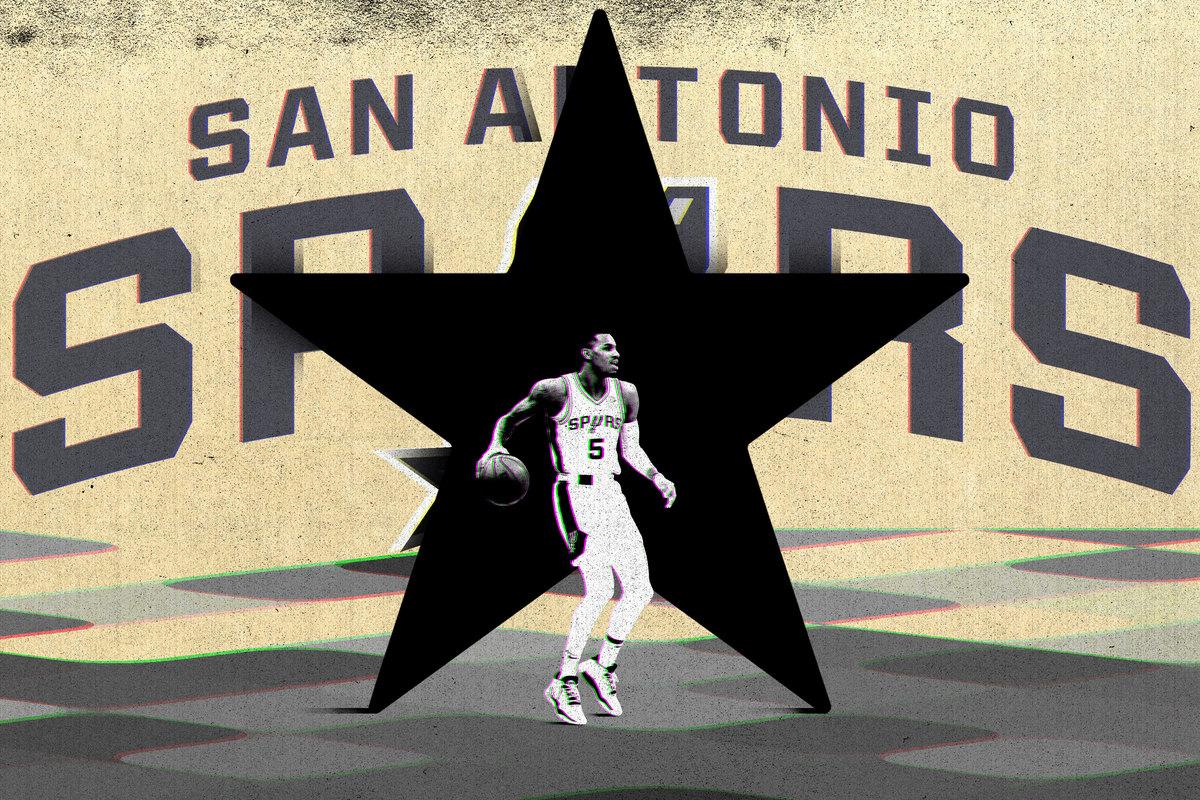
The San Antonio Spurs entered the 2021-22 season facing a smattering of important questions: Without DeMar DeRozan, would they shoot more 3s? (Not really.) Would they have enough playmaking juice? (Eh.) Would this be Coach Pop’s last year? (God, I hope not.) And then there was the massive, franchise-defining one: Is anyone on this roster a star? The kind of player you need in order to win at the highest level, as the Spurs are accustomed to?
Prevailing NBA wisdom dictates that such a player is a prerequisite for title contention, which divides the league into two groups: teams that are building around that player, and teams that are trying to find and acquire him. San Antonio belonged in the former category from 1997, when it drafted Tim Duncan, to 2018, when it traded Kawhi Leonard. It made the playoffs every year in that span, winning the Finals five times. Now, it has assembled a promising young core, but seems to still be searching for a centerpiece to take it back to the promised land.
In a preseason feature, ESPN’s Zach Lowe wrote, “It is hard to find anyone who thinks the Spurs have a foundational star. … It’s early, but that assessment seems correct.”
Half a season later, that assessment still seems correct. But Dejounte Murray is at least challenging the premise.
While San Antonio has taken a step back, its 25-year-old point guard has hit a new level, and might even snag an All-Star reserve spot in the West. Along with his typical All-NBA-level defense, Murray is averaging 19 points, eight rebounds, and nine assists per game, with more triple-doubles than James Harden.
But really I want to talk about Murray’s arms. On defense, he wields his outrageous (6-foot-10) wingspan with the fluidity of elastic and the burst of a viper, to great effect: He leads the NBA in both steals and deflections. He stretches high for rebounds and in a single motion snares the ball with one hand, tucks it under his arm, and takes off in transition. On offense, Murray uses his length to finish unorthodox push shots and floaters. His increasingly silky midrange pull-up is released from over his head, and out of defenders’ reach.
The Spurs boast a passable offense when Murray plays and look rudderless when he doesn’t. But my favorite part of his campaign has been the way he’s stepped into the leadership void that opened up when DeRozan left last offseason. Murray isn’t on the same level as a Kawhi or a Duncan, but he seems to relish being the top dog in San Antonio, including the expectations and legacy that come with that. He plays with a sneering confidence and a chip on his shoulder, all while maintaining the Spursian balance of taking responsibility without hogging credit or the ball. Preeminent NBA statesmen, from Gregg Popovich to Chris Paul, have praised his leadership.
Murray isn’t the only young Spur who has taken strides this season. Amid another losing season, there’s been progress up and down the roster: Twenty-two-year-old Keldon Johnson, best known for his authoritative rampages to the rim, is quietly second in the NBA in 3-point percentage. Devin Vassell, 21, is a long-armed defensive menace with a sweet jump shot who is leaning with confidence into a nascent off-the-dribble and on-the-move game. Derrick White, a veteran at 27, is an underrated all-around player and stellar defender. Lonnie Walker IV’s shooting is down, but his vision and passing are improved, and on good days the 23-year-old can keep the second unit afloat. Josh Primo, 19, was thrust by health-and-safety protocols into a bigger role than he or the Spurs likely imagined, but the 12th pick in last year’s draft has held his own on both ends.
I’d be remiss not to devote a paragraph or two to Jakob Poeltl. The 7-foot-1 Austrian protects the rim as well as anyone outside Philly or Utah and is nimble enough to hold his own when switching onto guards on the perimeter. When ball handlers do get past Poeltl on drives to the rim, he’s quick enough to stay close behind and long enough to pin that shit on the glass and send the Spurs in transition.
On the other end, he’s progressed to the point that I don’t even need to mention his screen assists. (Though, for what it’s worth, he is second in the NBA.) Poeltl has developed a nice pick-and-roll chemistry with White and Murray, creating passing lanes with savvy cutting and finishing with soft hands, inventive footwork, and a work-in-progress push shot. He’s also on something of a heater, averaging 19 points, 10 rebounds, three assists, and three blocks in his past seven games. Murray may be the Spurs’ engine, but Poeltl is their second-most-important player—a fulcrum for their offensive motion and the key to their defense.
When the whole team plays, the Spurs are surprisingly competitive. In December, they seemed to find an identity built around transition offense and frenetic defense. Seriously, when their defense is locked in, the Spurs look like the Forbidden Forest from Harry Potter, a thicket of arms that seem to be in multiple places at once. That momentum petered out as the Spurs lost player after player due to health-and-safety protocols. But when they’re rolling? It’s not that hard to talk yourself into this roster.
You can just feel the “but” coming. The young guys are good, but San Antonio is 19-32, 11th in the West, and on course for a third straight trip to the draft lottery. Their defensive talent hasn’t yet coalesced into consistent stops. They still don’t shoot many 3s, and they don’t get to the rim or the free throw line. Murray is very good, but he’s probably stretched as a no. 1 option.
For all the positive signs, the Spurs still feel heavy on high-quality complementary players and light on foundational stars. And given their inability to attract free agents and limited history in the trade market, it’s fair to wonder whether their 19-32 record may keep them in a feedback loop of drafting good-but-not-great players who make them just good enough to fall out of position to select the kind of star teams seem to need to contend these days. The players deserve credit for notable improvement, and the franchise deserves credit for hitting on and developing late-round draft picks. But how far can it get by hitting doubles? The Spurs have loads of cap space and a handful of appealing trade candidates, but in a league dominated by the same dozen superstars, do they need to try for a home run?
I’m not so sure. I’m encouraged enough by this team to want to see where it goes, even as some of these rookie contracts turn over into more-expensive extensions. These Spurs will grow into a good-to-very-good team. They fit together, they play hard, they pass, they defend. They’ll get better at hunting their spots and dictating pace. They’ll extend their range to the 3-point line. The Spurs’ player-development machine will do its thing: a new move here, a new read there. If enough Spurs improve in enough ways, what would be the compounding effect?
Pop likes to say that his success is a tribute to the blind luck of landing the no. 1 pick that became Duncan, but the organization’s real feat was finding the right running mates to supplement Duncan’s brilliance, and eventually unearthing its next star from the middle of the draft. Kawhi may not have stuck around, but the machine that produced him is still in place, ready to find the next franchise cornerstone, or help one of its recent draftees take an unforeseen leap. Nobody expected Murray to jump into the top five in assists per game. Nobody expected Johnson to shoot 44 percent from 3.
In San Antonio, trusting the process means nurturing the growth of the players on the roster, rather than bottoming out in pursuit of the no. 1 pick. There are still plenty of questions about the Spurs’ future, but two decades of historic stability buys you more than three bad seasons’ worth of time to come up with the answers.

